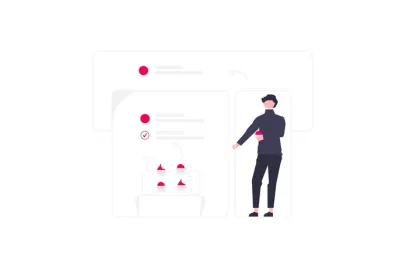Do Google and Facebook offer you reliable statistics?

Google and Facebook are the two main online advertising programs. But how good are these two giants when users measure the effect of their ads?
For a long time, Google Analytics has had the “throne” as the most used web analysis tool, but lately Facebook It has also started to move and has created a new competition between the two giants.
Facebook Analytics has been on the air for a couple of years, and a few weeks ago, on the occasion of Agency Day on Facebook, they presented and launched”Facebook Attribution“, the advertising measurement tool designed so that you know all the details of the customer journey and, consequently, so that you can make more informed business decisions.
You should know that Google Analytics provides a different picture of the impact of your investments in Facebook compared to Facebook's own figures. So, obviously, Facebook is interested in creating its own tools that offer better data. Therefore, Facebook is a channel in which, as an advertiser, you must take it into account to carry out your campaigns and invest your budget.
Around the same time that the launch of Facebook Attribution, Google, which was waiting for it, introduced another new feature, the “Store Visits” conversions. Store visits that are attributed to visible impressions are only available for Display Network campaigns or ads that run on the Google Display Network. Store visit conversions are only available to certain advertisers. For example, they're not available to advertisers with sensitive location categories related to healthcare, religion, adult content, and children.

Here are, briefly, two new features and why you should investigate these two areas more thoroughly.
Track the customer from the web to the store
For several years we have seen how the word “multichannel” was in vogue, and in terms of measurement, you've probably asked yourself one of the following questions:
- How many people come to my store after visiting my website?
- Does my newsletter bring visitors to my physical store?
- Does Google Ads contribute to offline businesses?
Until a while ago, it was possible to measure what we just mentioned, for example, using coupon codes in campaigns and through complex (and expensive) systems. Or perhaps for larger statistical analyses, in which a campaign was launched in a geographical area and then analyzed if there has been a statistically valid effect on visits to stores in this area.
Google is now doing this with its “Store Visits” concept. These have been an option in Google Ads for several years. However, to start using this feature, you must meet a number of requirements:
- Have several physical stores located in countries that meet the requirements. Ask your account representative if store visit conversions are available in your location.
- Receive thousands of clicks on ads and visible impressions.
- Have an account of Google My Business linked to your Google Ads account.
- Include each of your physical stores in your Google My Business account.
- That at least 90% of these linked locations are verified on Google My Business.
- That location extensions are enabled on the account.
- Have enough data about store visits in the backend to attribute them to ad clicks or visible impression traffic. You must also comply with our user privacy settings.
These requirements have been eased long after Google's algorithms have improved.
But some people have already been able to see the number of visits to stores, for example, at the Google Ads campaign level, which has been very valuable and has helped to justify significant investments in Google Ads for the individual chain.
The big news is that the concept is now implemented in Google Analytics, so you can see store visits and their percentage, even for other channels. This means that you'll be able to see how big the 'conversion rate' is, for example, from your SEO efforts and newsletters.
Technically, very little is required, you just need to be in control of all your physical locations in Google My Business. We have already started to see data on some (large) customers. It's incredibly exciting and opens up some interesting opportunities.
For example, in the following screenshot you can see some data that will make you ask the following questions:
- Why does Google/CPC (Google Ads) generate a greater number of store visits? (answer: A high percentage of campaigns with their own brand)
- Can we improve the launch of the stores in our newsletter?
- Why is Bing so inefficient at getting store visits?

Unfortunately, it's only a beta version. And Google has, of course, some ethical and legal requirements, in which the user is not allowed to be tracked in the store. Therefore, we expect to have a certain volume in the number of visits and visits to the store before this is possible.
In Google Analytics Conversions -> Store Visits (BETA), you'll see if you have access.

Facebook Attribution
Google has been using a tool called Google Attribution for a long time. But in October, Facebook overtook Google in this regard when they launched Facebook Attribution.
The correct attribution of your marketing efforts is a Holy Grail when it comes to Digital Marketing. It may mean that large marketing budgets are moving. In short, the standard has previously been the model Last Click.
Example: A user browses the web and visits an e-commerce a couple of times. Suppose that one of the visits comes from the newsletter, another through a click on a Facebook ad and another with a click on one of the Google search results.
With the classic Last Click model, only the last visit counts or what is attributed to the value. For example, if the user clicked on a Google ad just before the purchase, it is Google Ads that receives all the credit for the sale. With different attribute models, try to distribute this credit to the different touchpoints (touchpoints) of the Customer Journey so that the same customer obtains a more accurate picture of the customer journey.
Facebook can track all devices
Now, Facebook Attribution enters the scene: tracking individual users across all devices.
Most of them have a Facebook profile and use it on all their devices. In this way, Facebook can track the individual user across many touchpoints and provide an appropriate picture of the customer journey.
If you also have a Facebook Pixel correctly installed on your website, you have knowledge about user behavior on your website and - in the end - about conversion.
An interesting option in Facebook attribution is, at the same time, that it can import data from other systems, such as Google Ads.
Then, in Facebook Attribution you can compare figures such as ROAS (Return on Advertising Spending) between Facebook and Google in Facebook Attribution. And you'll get information about the number of people who have clicked (and seen) your Google ads, directly in Facebook Attribution.
We recommend that you create a Business Area in Facebook Attribution as soon as possible and follow the different guidelines to add different platforms, for example, Google Ads. This way, you'll get data as quickly as possible, so you can then process, analyze and prioritize your efforts.
How can we help you?
If you need more information, do not hesitate to contact us.
Cómo podemos ayudarte
Consulta los servicios con los que te ayudaremos a conseguir tus objetivos digitales.



